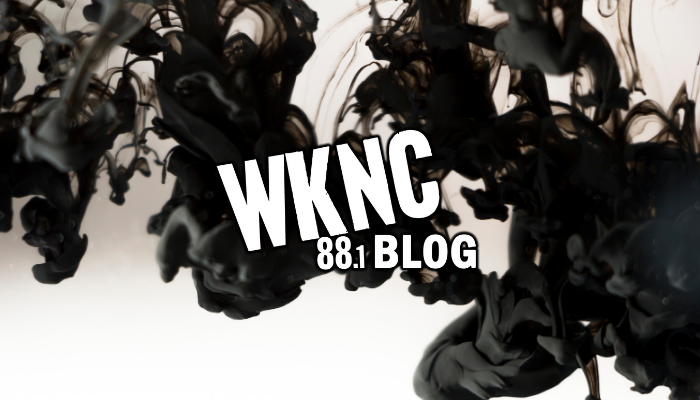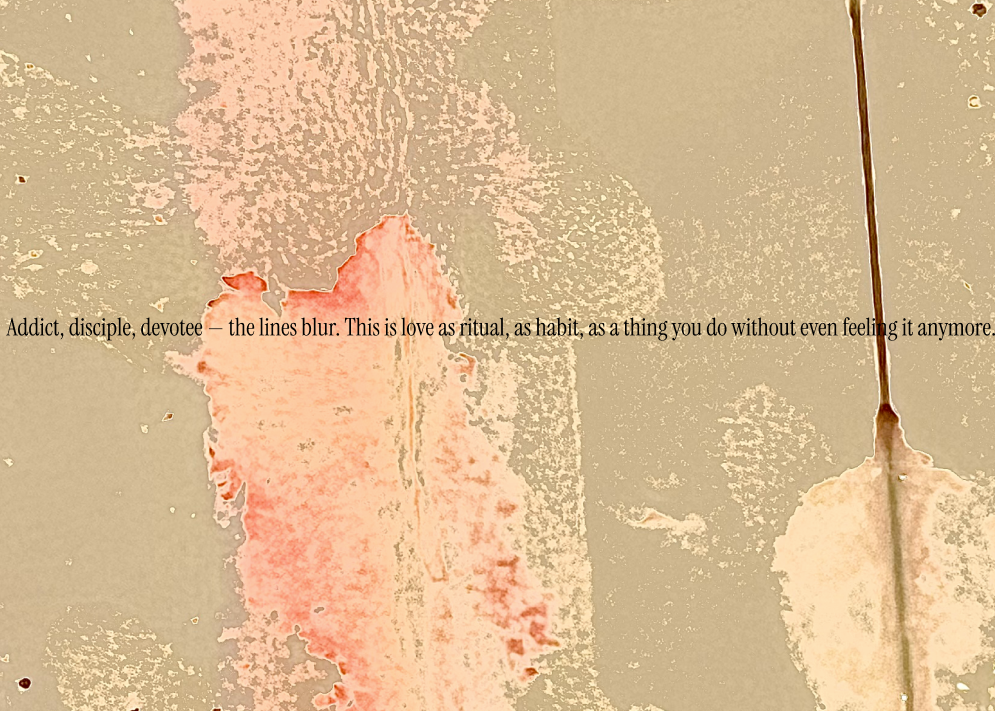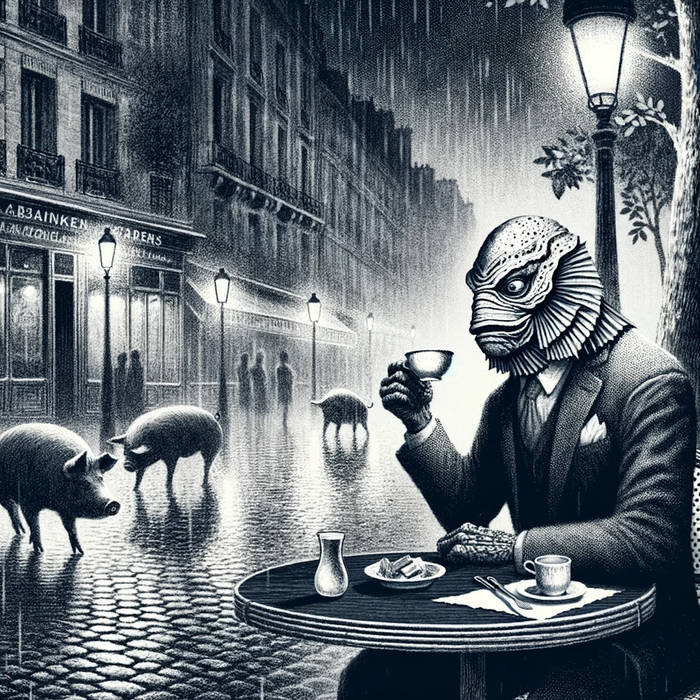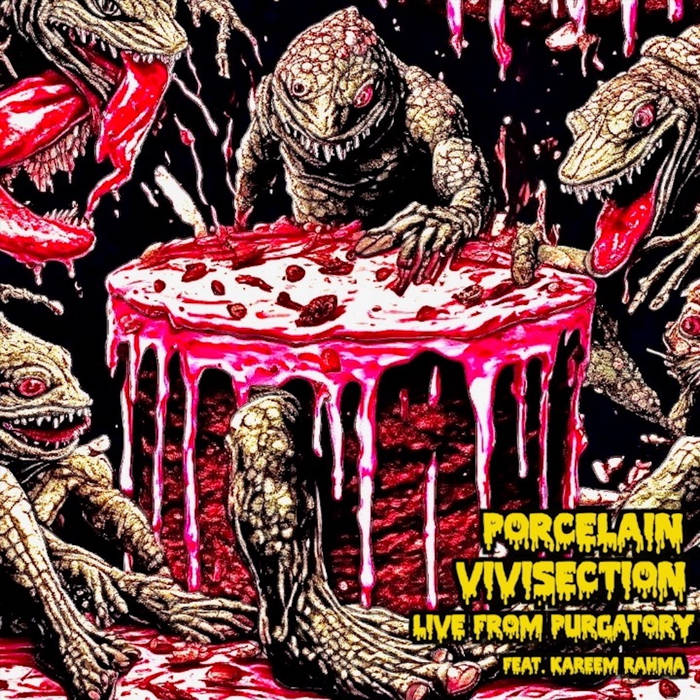I love going to the Renaissance Festival. I go every year and sometimes even twice. The one performance I never miss would be the “The Craic Show.” I have mentioned The Craic before briefly so today I will dive deeper.
About the Band
The Craic is currently a five piece Irish/Celtic metal band at the Carolina Renaissance Festival. They are currently made up of Daniel O’Ryan who is the frontperson, growling vocalist, electric guitarist, medieval bagpipe player and the first original member, Netto Batera who hails from Brazil and has been playing the drums in the band for the last four tours, Ruby Bloodstone who has been playing the upright bass for the last two tours, Nathan Redaxe who has been playing electric violin for the last three tours and lastly their newest addition being the roadie Levi who plays drums and the mandolin. Throughout the years, about 15 or so members have filtered in and out, some staying for years and some for just one weekend.
As can be expected in all bands, members sometimes don’t always get along super well, or have other interests. The current CRAIC lineup however is a definite exception. The members all have the same energy and love for their craft as well as each other. They all enjoy each other’s company outside of the music. And even within their musical lives, O’Ryan lauds the other members for their writing and musical abilities. A writing session would consist of O’Ryan noodling about on a stringed instrument finding a riff, then a melody, followed by a chord progression and finally some lyrics. He then records it and asks the others to add something to make it great. Finally, they record all the parts and put it together in Logic Pro.
The band was first formed by O’Ryan and had their first performance on Feb 18th, 2012. As explained at the start of every show, “craic” (pronounced “crack”) is an Irish Gaelic word meaning good or fun times (can also mean a story). The name comes from O’Ryan’s personal experience with traveling to Ireland in the 2000s and hearing it constantly used, not understanding what the word actually meant.
O’Ryan got the idea for the band back when he traveled to Germany and received his first exposure to medieval bagpipes being played at events. These groups played metal/medieval combinations and O’Ryan bought his first bagpipe there. O’Ryan also had a love of rock n’ roll and metal music (KISS, Led Zeppelin, Pink Floyd, Metallica, Slayer, etc.) and decided to bring the metal/medieval combinations back to the United States. His goal, essentially, was to make and play music that sounded like what Mozart’s versions of rock would sound like. When asked what some of the inspiration behind the band might be, O’Ryan responded with names like Flogging Molly, Dropkick Murphy and The Pogues.
When asked what the aspirations for the band were, O’Ryan stated their biggest one was to help people forget their troubles and to enjoy life in the present. “Craic” meaning to have a great time follows this principle well. The band’s main message to people is to get out of the rut and away from the stressors and overthinking.
Renaissance Life
Now I can’t speak for everyone but I have always wondered how someone became involved with the Renaissance Festival life. When O’Ryan bought his medieval bagpipe, he also was taught by castle and medieval performers in Germany. Upon returning to the United States, his music taste and new talent opened up some doors. He formed a band and eventually they started booking medieval fairs.
I can imagine that the Renaissance Festival lifestyle isn’t for everyone. O’Ryan happens to love it. From what I gather, once you’re on a circuit you move approximately every two months. He stated that his favorite part was the interaction between different people and the band. Going from place to place has allowed the band to make friends with locals who look forward to seeing them every year when they return. This lifestyle has also been characterized as a huge party of fans where you can still make a living. But returning to the point that it isn’t for everyone. You have to be nomadic and are only ever really stable for a couple months at a time.
Shows and Projects
When asked what their favorite performance was, O’Ryan quickly said the Colorado Renaissance Festival. This festival, not unlike the Carolina Renaissance Festival, is eight weekends long but every show they play has a minimum of 300 people in attendance. The finale shows are intense and usually have over 500 people in the audience. The event has been characterized by the crazy and awesome people who come to see them, especially at the end of the day.
After playing the show for 12 years, I would assume the nerves would calm down. While O’Ryan stated that he no longer experiences stage fright or a fear of messing up, he still feels a bit nervous before a show in the hopes that people will enjoy the performance and give a good energy back to the band.
The band is currently working toward putting out a new album that would have an Autumnal/Halloween feel to it. They want to keep up the work with the albums and the next big thing that O’Ryan mentioned was taking the band on a trip to perform in Europe. The hope is to be able to play at a German or Scandinavian folk metal music festival. I, for one, would love to see something like that and would hop a flight over there just for that if I could.
When asked who the band would like to collaborate with, if anyone, the first response was “I don’t know.” That seems like a fair response, especially to such a tough question. Upon pondering, the response was to be able to meet and collaborate with some of the founders of medieval metal music, such as Corvus Corax (Latin for “Common Raven”).
Accomplishments
The song the band is most proud of and is their favorite would be “Seven Seas.” This song was written in less than an hour and is a bit of a different sound than the rest of their repertoire. The song is an impactful waltz and meant to be a self-portrait. When performed live, audience members link arms , sing along, and sway to the music.
In February of 2024, the band released an album called “Icons” with 14 different songs. O’Ryan listed this album, alongside their new EP, “The Five Song EP,” to be some of the accomplishments they are most proud of at this point. As someone who has listened to some of these songs live, I can attest to their pride. They are well written and well performed songs.
Last but not least, I asked O’Ryan if he considered himself and his band to be successful. He asked me what I considered to be success and I told him that was part of the question. His response was that success was being completely satisfied with what one’s doing and that it brings peace and joy and a steady, sustainable income. He thinks that yes the band is a success. The band seemingly took off right away, even if the quality of performance wasn’t up to where it is now. O’Ryan believes that the reason it took off was because no one in the United States had ever really seen this kind of music.
They faced a turning point around 2016 and 2017 where O’Ryan decided to take on the band full time. He stopped taking small and solo gigs and took the show on the road. Around COVID, O’Ryan found the band struggling and many members left the band. It was just him and his drummer Netto against the world. They took what they had and ran with it to make what is, in my opinion, one of the more impactful, fun and best performances at the Carolina Renaissance Festival.
Members
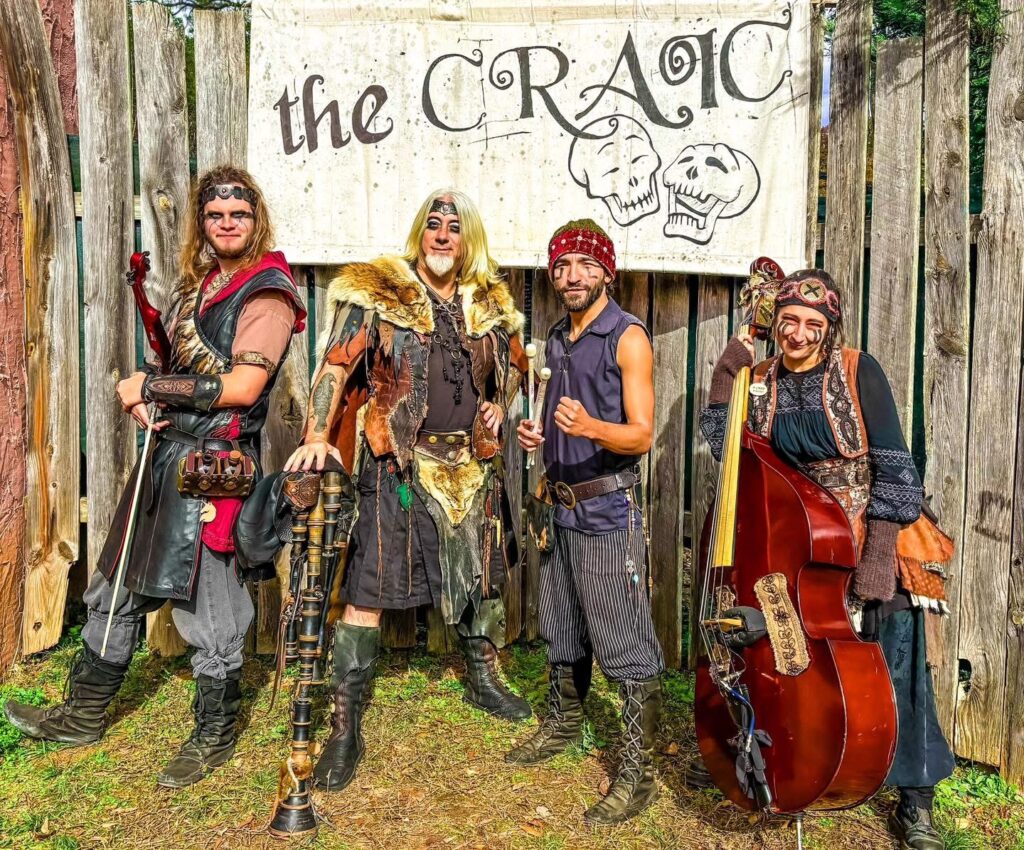
Now, I want to take a minute to talk about the members themselves. At the very front, there is Daniel O’Ryan. He is up there switching it up every song between the double-necked guitar and the medieval bagpipe. Worth mentioning that he uses the bagpipe and sings in the same songs. I am amazed at the breath control that that must take. His vocal style is not unlike many metal vocalists with a low grumbling and growling. He seems to have excellent vocal control and he knows what he’s doing.
To his right, audience left, we have Nathan Redaxe. He is up there fiddling away with his electric violin. This performer is clearly having a wonderful time. He dances around and has a big smile on his face the whole time. It would be an understatement to say he plays extremely well and if I knew more about violin I could go on and on about it.
Behind him would be Netto Batera on the drums. These drums, first of all, are decked out. They are covered in furs and he uses “bones” instead of drumsticks. I swear I have never seen a more energetic and passionate drummer in my life. He is having the time of his life up on that stage and plays so well even when one of the cymbals is knocked over.
Beside him, there would be Levi the roadie. I have only seen this person play once. He played the mandolin when I saw him and he played it well. He appeared fairly reserved on stage and maybe a little unsure of himself but I have no doubt that he’ll be having a grand old time in no time.
Lastly, Ruby Bloodstone. This performer is really something. I have seen them play a couple times now and they always seem so happy to be there. They always have a huge smile on their face and always place extremely well. They carry themselves well and are always dancing along to the music.
Next time anyone’s in the Charlotte area, I would highly recommend not only checking out the Carolina Renaissance Festival, but also paying O’Ryan and The Craic Show a visit.
— dj dragonfly






